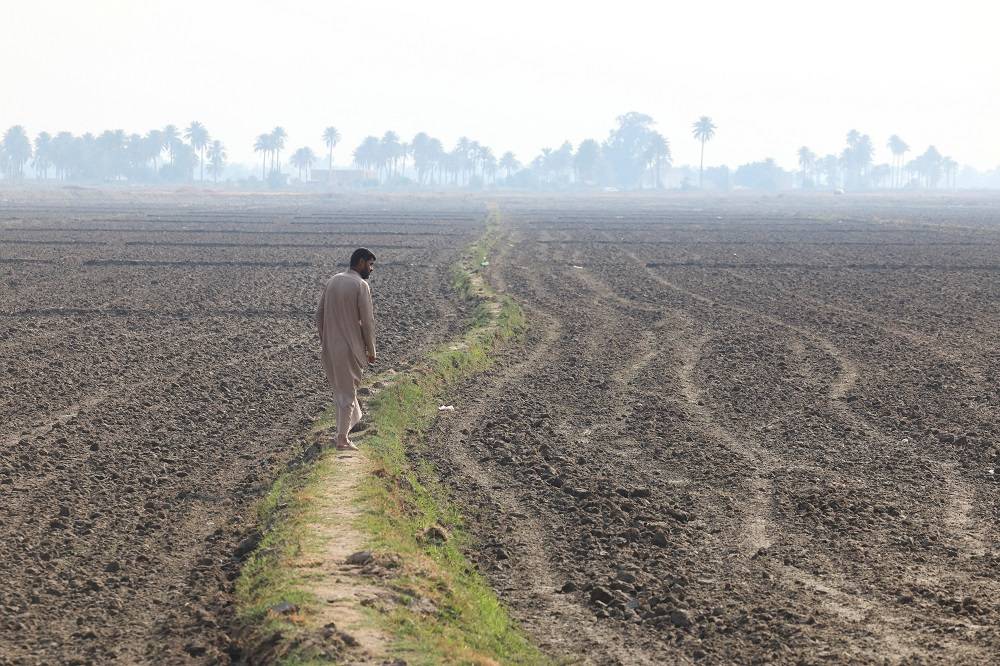Netflix last week released a series about Israeli spy, Eli Cohen, who had infiltrated Syria in the 1960s. The six-episode series sought to glamorize the image of the spy, taking into account only the Israeli version of accounts. The show was after all written and directed by Israeli director Gideon Raff and sought to present Israeli intelligence “heroics” in contrast with corruption and betrayal among the Syrian political class.
The series, starring comedic actor Sacha Baron Cohen, was rife with factual and political errors and omits the Syrian version of the story. Few Syrian accounts exist. One was recounted by Judge Salah al-Dalali, who presided over the court that sentenced Cohen to death. The Mossad spy operated in Syria between 1962 and 1965 when he was arrested and executed.
Syrian writers and historians pointed to ten historical errors committed in “The Spy”:
1- President Amin al-Hafez: The series showed that he met and struck a friendship with Cohen when he served as Syria’s military attache in Argentina. Hafez himself denied the relationship during a television interview in 2001. He explained that he was in Argentina in 1962 long after Cohen had arrived in Damascus. He revealed that he only met Cohen after his arrest in 1965. Claims of the friendship was promoted by Egyptian dailies at the time as part of a campaign against Hafez over a backdrop of political tensions. No document or picture exist to prove the relationship between Hafez and Cohen.
2 - Hafez al-Assad and Amin al-Hafez: Assad was not a lieutenant general as claimed by the series. He was an officer deployed in Egypt. Amin al-Hafez did not come to power after the March 8, 1963 coup in Syria as shown in the series. He was appointed interior minister and then assumed the presidency of the revolutionary command council. He became president on July 27 later that year.
3 - Michel Aflaq: He did not meet with Cohen and did not give him a list of people to invite, including Prime Minister Khaled al-Azm, for a March 8 soiree. Azm had never visited Cohen in his life. Contrary to what the series claimed, Aflaq did not have information about the army’s activity during the March 8 coup.
4 - Abdul Karim Zahreddine: An army chief of staff, he never set foot in Cohen’s house, but his nephew, reservist Maazi, did. Maazi was Cohen’s friend and released from the army on the day of the coup. He later assumed minor positions in public office. He used to meet with Cohen at his house or at the al-Kamal cafe in central Damascus. He was arrested and sentenced to five years in prison in 1965.
5 - Maazi Zahreddine and the front: Maazi escorted Cohen to the Syrian front with Israel in 1962. It was claimed that the spy obtained military intelligence that was vital to the June 5, 1967 defeat during Six-Day War. However, there is a five-year period between the visit and the defeat, raising questions over just how vital the information actually was. Moreover, officers deployed at the front and military positions were repeatedly changed after March 8, 1963 and later in 1966. A western expert revealed earlier this week that Cohen’s mission was not aimed at gathering information about the front, but cracking down on Nazi officers who were staying in Damascus. He was also tasked with following up on the situation of Jews in the Syrian capital.
6 - Deputy defense minister: The series claimed that Cohen was considered for the position of “deputy defense minister”. No such position had existed at the time. It was introduced in 1970. Moreover, such a position is restricted to military figures and no civilian can occupy it.
7 - Ahmed Suweidani: He later became chief of staff. He was not head of Hafez’s security in Argentina. The scene from the series where Cohen secretly enters Hafez’s office and takes photographs of classified documents is pure fiction. The series did get Suweidani’s suspicions against Cohen right. An expert revealed: “He was suspicious of Cohen from day one. He played a central role in exposing and arresting him in 1965.”
8 - Execution: The series showed Damascene Majed Sheikh al-Ard doffing his hat to Cohen out of sorrow and respect the moment he was hanged in al-Marjeh square. A historian said that it is well-known that Sheikh al-Ard was deceived by Cohen. He was one of his victims.
He met Cohen in 1962 on board a ship that was sailing from Europe to Beirut. Cohen ingratiated himself to Sheikh al-Ard and entered Syria with him through Lebanon under the alias Kamel Amin Thabet. Sheikh al-Ard helped Cohen rent a furnished apartment on Abu Rummaneh street in Damascus. The expert added: “The relationship between the two men did not go any further because Sheikh al-Ard had no information of use to the spy.” Moreover, he once spoke about his admiration of Adolf Hitler, which immediately caused friction between him and Cohen.
Sheikh al-Ard did not witness Cohen’s execution and did not doff his hat to him. He was in jail, serving a life sentence. He was held in Qalaa prison in Damascus and later transferred to Palmyra prison where he died in his cell reportedly of suicide.
Neither Hafez, not his wife, were present at the execution. Another fabrication is the disgusting storyline about the sexual relationship between Hafez’s wife and Cohen and allegedly with the approval of her husband.
9 - Infiltration of society: The series claimed that Cohen had wormed his way into Syrian society and befriended influential figures. In fact, he only made friends with B and C class figures. He avoided top rank officials out of fear of being exposed. In 2004, Dalali told the writer that Cohen was “just an ordinary spy.” He was buried in a cave by the al-Dimas road. Later his remains were dug up and buried in an undisclosed location.
10 - Abu Rummaneh neighborhood: The series’ depiction of the neighborhood looks more like Talaat square in Cairo. It also claimed that a Russian officer helped detect radio waves, as part of communication with Israel, coming from Cohen's apartment and which led to his discovery. There are four accounts of how he was exposed: by the Russian officer, nearby Indian embassy that detected radio interference, Egyptian intelligence and Suweidani.










